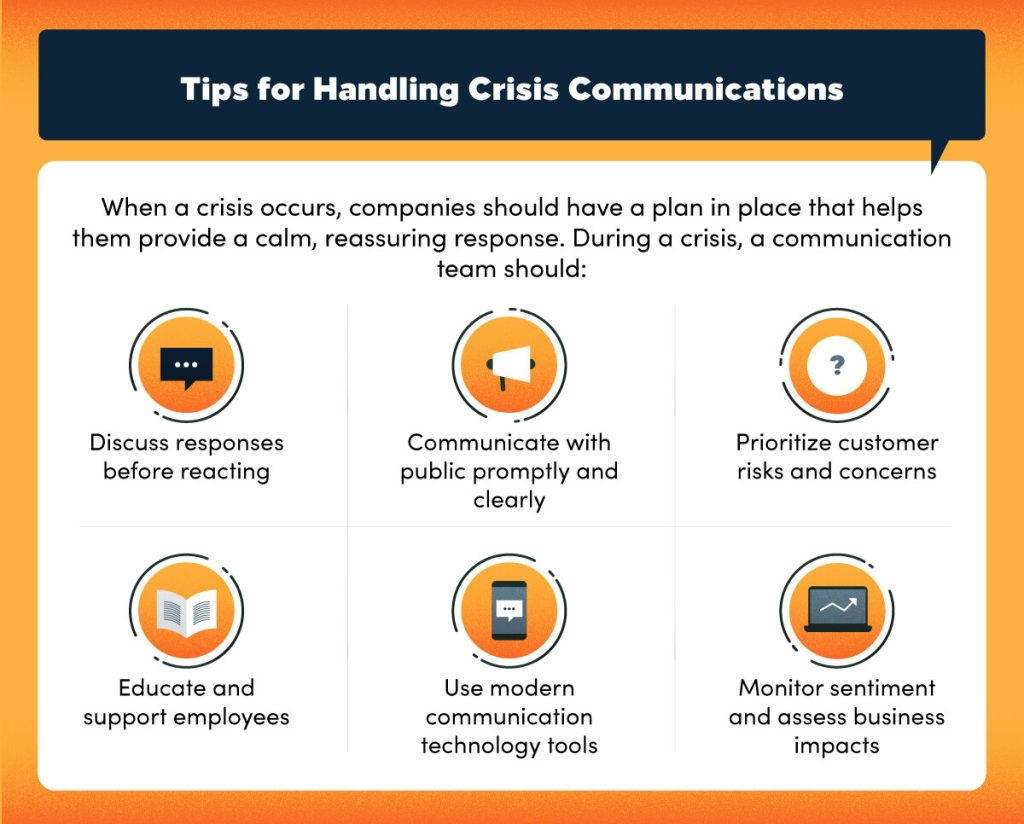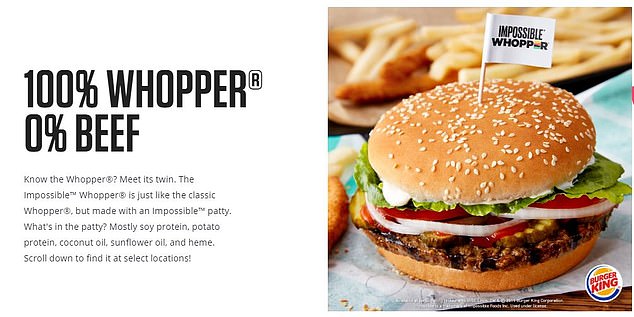Words can be quite mighty, can’t they?
One wrong word could trigger a fight with another person. Depending on the situation If you don’t pay enough attention to how you communicate, you might say something inappropriate without meaning to and cause a confusion an angry outburst or some other effect that you didn’t plan to. That’s why it is important to know some crisis communications examples!
There are numerous crisis communications examples in our daily lives, which can cause both minor and major problems. And if they can damage personal relationships, think about how much harm they can do to a whole brand. Therefore, it’s clear why more than half (55%) of PR professionals highlight the necessity of skills in crisis management and communication.
💡 Read Crisis Management 101: How to Save Your Business When a Crisis Strikes
In this blog we’ll go through the definition of crisis communication, we’ll discuss some of the most famous crisis communications examples, and how the affected brands dealt with the situations.
Let’s start!
What is Crisis Communication?
In general, crisis communication refers to technologies, systems, and protocols that enable organizations and brands to communicate effectively when facing a disaster.
In public relations, crisis communication is explicitly used to protect and defend an individual, company, or organization facing public criticism. It’s essential nowadays because news spreads in a flash thanks to the Internet.
The goal of crisis communication is to bring awareness to the type and extent of a crisis and implement specific actions that a brand should undertake to reduce it.
Read 6 Political PR Examples of Crisis Management Done Right

What’s the difference between crisis communications and PR crises?
Public Relations is a broad marketing sector, and distinguishing particular parts of it can be tricky.
A crisis is a circumstance that threatens important expectations and has the potential to affect an organization’s performance and outcomes. It’s a live issue happening in real-time that needs to be taken care of as quickly as possible.
Crises can take various shapes and forms, like scandals, defective products, or unforeseen calamities. They can also be caused by multiple factors, such as extreme weather conditions, cyberattacks, criminal acts, or PR-related agents like media mishaps.
All these incidents gain media attention and potentially destroy the affected company’s reputation in the long term if not appropriately handled.
Crisis communication is the process of gathering, processing, and disseminating information in times of catastrophe.
What else is essential to know regarding crisis communications?
Read 3 Powerful Good Crisis Management Examples
Why companies need a crisis communication action plan
Crises are newsworthy – that’s why brands need to develop strategies to be able to react to negative information more quickly and effectively. Even if you think there’s little chance of your brand encountering a crisis, you shouldn’t neglect the risk. As said, it’s better to be safe than sorry.

Crisis communications examples of prevention techniques include pre-crisis, in-crisis, and post-crisis actions. The right strategies combined with powerful media monitoring tools can help your team at every stage of the process.
Having this in mind, you should consider implementing a crisis response strategy. You can read about specific tactics in this article to improve your crisis communications strategy.
Okay, enough with the theory. Let’s look at real-life crisis communications examples.
Read Four Crisis Management Steps to Take to Stop a Disaster
Crisis Communication Example no. 1: Burger King
What was the situation?
In 2019 Burger King introduced a new addition to their menu – Impossible Whopper, in collaboration with Impossible Foods. This was the first meatless fast-food burger on the market and it was a huge deal at the time. As it turned out, it increased their sales by 10% in the first quarter after introducing it on all locations.
Problems arose when they got a lawsuit for false advertising and directly making money off something that, according to the plaintiff, was not true.
Read Bad PR Examples

What went wrong?
What bothered vegan activists and lawyers the most was the fact that the advertisement for the Impossible Whopper said ” 0% beef, 100% Whopper”, whereas they didn’t emphasize that meatless burgers are made on the same grill as the ones made of meat, unless requested differently.
To find out that you were maybe unconsciously served a vegan Whopper grilled on a meat grill quite shocking for people who are consciously trying to keep meat off their plate. At the same time, many agreed that this was an important step in the fast food industry and that doing anything to sabotage it would be counterproductive and dangerous to the cause.
Burger King decided not to comment any of it until the judge decides. And it turned out to be the best decision they could make.
Read 5 Crisis Management Jobs That Save the Day
How they fixed it
Their success lies in the fact that they let the crisis go its way without intervening more than necessary. This is quite a risky move on the one hand, but as it turned out in these cases, when you have a lawsuit going on it’s better to say as little as possible until the verdict is reached.
When the judge dismissed the lawsuit, they responded that the lawsuit had no basis and they explained that they never said that Impossible Whoppers were vegan. Shortly after this the crisis was almost forgotten and they continued with an even bigger campaign, using humour.
Crisis Communication Example no. 2: Chipotle E Coli Disaster
What was the situation?
According to the CDC, 60 cases of E Coli poisoning associated with the Chipotle chain restaurant were reported in 14 different states in the US by the end of 2015. Even the most fervent brand loyalists were left doubting the authenticity and safety of the foods served there after this information was published.
The media picked up on the incident immediately and Chipotle faced a PR crisis that has impacted them for a long time since. It resulted in a massive drop in the stock price of the company and its sales (estimated to be in the tens of millions).
Read 9 Vital Steps of Crisis Communication for Successful Outcome
What went wrong
The company tried to mitigate the risks as fast as possible, so it started with public appearances. Later on, it launched a whole PR campaign intending to help the brand recover from the massive crisis. The campaign’s target audience was probably those who were buying food at Chipotle restaurants infrequently, as they were the most likely to stop purchasing altogether.
Although research shows that Chipotle responds to 83% of Facebook posts and 90% of Twitter mentions, which is a good score, the company didn’t make the grade this time. At first, the brand’s answers were defensive and advised users to contact a doctor if they felt unwell. A major misstep in the Chipotle strategy was that they withheld information for a few months about the severity of the problem.
How they fixed it
Finally, Chipotle developed further actions to solve the problem. It explained what measures had been taken to remedy the situation. The brand designed an infographic to post updates and accomplishments regarding the crisis. It also focused on gathering positive press articles and mentions about their company and reposted them on their website and other media channels (e.g. Twitter).
Moreover, Steve Ells, Chipotle’s founder, apologized publicly to all those who had fallen ill and announced a comprehensive food-safety program that exceeded industry norms. Then, the brand published press releases about their improved cooking methods to prevent foodborne illnesses and guarantee better quality.
Thanks to social media monitoring, Chipotle could gradually dispel negative comments by reacting to them directly. Besides responding, the company included links to the positive news to highlight its efforts to improve the quality.
Read 5 Crisis Communication Examples: Here’s How to Do It
Crisis Communication example no. 3: Kendall Jenner Pepsi Ad
What was the situation?
At the beginning of Q2 in 2017, PepsiCo launched a campaign called “Live for Now – Moments” that built off a previous campaign from 2012. The core message of the ad was “to project a global message of unity, peace, and understanding,” but the audience interpreted the meaning differently.
Supermodel Kendall Jenner appeared in the advertisement as part of a staged protest, later approaching a police officer who was standing guard over the protestors with a can of Pepsi for him to take a sip. The company thought that this gesture would symbolize finding common ground, but it was wrong.

What went wrong?
Many viewers complained that the advertisement was insensitive and didn’t portray the intended message. In particular, the ad trivialized Black Lives Matter by portraying the rally as a block party that Kendall Jenner joined to have fun.
Neither Kendall Jenner nor Pepsi is perceived as representative of social activism. Therefore, the political messaging didn’t go along with Pepsi’s brand identity and how people perceive the drink manufacturer, which is related more to fun than fighting severe issues.
Despite its attempt to represent a protest movement, Pepsi failed to understand its target audience. The data used by the company to create a marketing persona probably was too generic. It resulted in building a message that didn’t meet the audience’s needs and expectations. The communication used in the ad was vague as well. The protest sign shown in the video said, “Join the conversation”, while the core message of the protestors was widely known and their aim wasn’t to negotiate.
Read 7-Step Risk Management Guide for PR Professionals
How they fixed it
PepsiCo released a statement on all of its social media profiles in a flash. The communication was both empathetic and transparent. Besides simple words, the company promised to act.
The brand responded to some private posts that had gained extensive reach. Like this Tweet posted by Martin Luther King Jr.’s youngest daughter:
Besides social media responses, Pepsi removed the advertisement in less than 24 hours.
As a result, Pepsi and Kendall Jenner avoided lasting backlash through effective crisis communication strategies and immediate reactions.
Read 4 Ways To Improve Your Crisis Communications Strategy
What Can You Learn from These Crisis Communications Examples?
In a nutshell, if your brand is facing a crisis, you should take care of a few things that can become game-changers.
- Create a crisis communication action plan based on a few possible scenarios. Write what to do step by step in order to react immediately and put out the fire before it spreads.
- Include both traditional and online marketing channels.
- Streamline your crisis communications.
- Enable real-time alerts and updates. You can set up such notifications with a media monitoring tool.
To Sumarize
The crisis communications examples shown above prove that fast reactions are vital for nipping PR problems in the bud. Prevention is better than cure. If any issues occur, try to communicate with your audience in real-time. A cloud phone system could also help with this, especially because it could be integrated with most CRM software available. However, it would be perfect if you could respond to messages that have the potential to turn into a crisis before they go viral.
To do this, you would have to monitor every online channel where users can post their reviews, opinions, and experiences. Luckily, you don’t have to do so manually. There are tools like Determ that can do the work for you. In addition, social listening software systems crawl every part of the Internet and interpret the comments to notify you about any negative ones. Thanks to this, you can respond to them in no time.
If your brand faces a PR crisis and it’s too late to avoid the issue. Always focus on sharing an official statement as quickly as possible. But try to take good care of your pre-crisis management. It’s always better to prevent crises from happening in the first place than to recover from them.